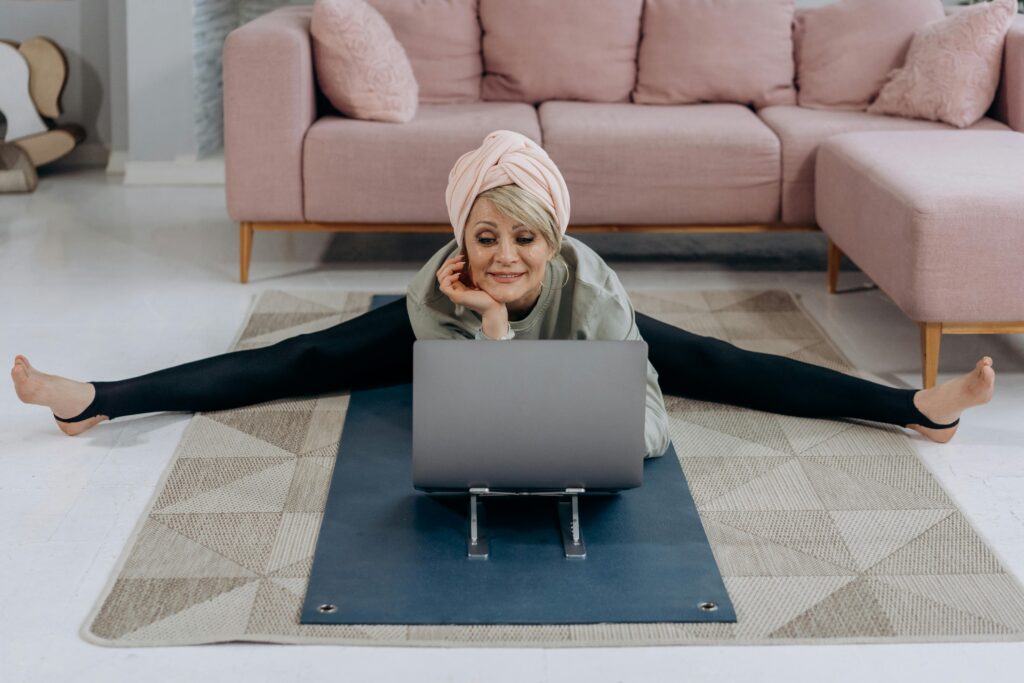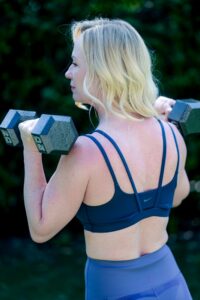As women age, maintaining a healthy and active lifestyle becomes increasingly important for overall well-being and longevity. For women over 50, fitness routines must adapt to the changing needs of the body, addressing issues such as decreased muscle mass, joint flexibility, and bone density. This blog explores how women over 50 can effectively adapt their exercise routines to stay fit, healthy, and vibrant.
Understanding the Aging Body
Before diving into specific exercise routines, it’s essential to understand the changes that occur in the body as we age:
- Muscle Mass Decline: After 30, women begin to lose muscle mass at a rate of about 3-8% per decade. This rate increases after 60.
- Bone Density Reduction: Post-menopause, women experience a decrease in bone density, increasing the risk of osteoporosis.
- Joint Health: Aging joints may become stiffer and more prone to injury.
- Metabolism Slowdown: Metabolic rate decreases, making it easier to gain weight and harder to lose it.
- Cardiovascular Changes: Heart health becomes a critical focus as the risk of cardiovascular diseases increases.
Adapting Exercise Routines
Adapting exercise routines to accommodate these changes is crucial for maintaining health and fitness. Here are some strategies and exercises tailored for women over 50:
1. Strength Training
Why It’s Important: Strength training helps counteract muscle mass loss, improves bone density, and boosts metabolism.
Exercises to Include:
- Bodyweight Exercises: Squats, lunges, push-ups, and planks.
- Resistance Bands: Lightweight and versatile, they can be used for a variety of exercises like bicep curls and leg extensions.
- Light Weights: Incorporate dumbbells for exercises such as shoulder presses and deadlifts.
Frequency: Aim for 2-3 strength training sessions per week, focusing on different muscle groups each session.
2. Cardiovascular Exercise
Why It’s Important: Cardiovascular exercises improve heart health, increase stamina, and aid in weight management.
Exercises to Include:
- Walking: A low-impact exercise that can be adjusted in intensity.
- Swimming: Gentle on the joints and excellent for cardiovascular health.
- Cycling: Provides a good cardio workout with minimal joint stress.
- Dancing: Fun and effective, it also helps with balance and coordination.
Frequency: Aim for at least 150 minutes of moderate-intensity or 75 minutes of high-intensity cardio each week.
3. Flexibility and Balance
Why It’s Important: Enhances joint health, reduces the risk of falls, and improves overall mobility.
Exercises to Include:
- Yoga: Improves flexibility, strength, and balance. Poses like Downward Dog and Warrior II are particularly beneficial.
- Pilates: Focuses on core strength, flexibility, and balance.
- Stretching: Incorporate daily stretching routines focusing on major muscle groups.
Frequency: Aim for flexibility and balance exercises 3-5 times a week.
4. Functional Fitness
Why It’s Important: Enhances the ability to perform everyday activities with ease and reduces the risk of injury.
Exercises to Include:
- Chair Squats: Mimics the motion of sitting and standing.
- Step-Ups: Strengthens legs and improves balance.
- Wall Push-Ups: Easier on the joints while still building upper body strength.
Frequency: Incorporate functional fitness exercises into daily routines.
Tips for a Safe and Effective Workout
- Warm-Up and Cool-Down: Always start with a gentle warm-up to prepare muscles and end with a cool-down to aid recovery.
- Listen to Your Body: Pay attention to how your body feels. If something hurts, stop and reassess.
- Stay Hydrated: Drink plenty of water before, during, and after exercise.
- Consistency is Key: Regular exercise is more beneficial than sporadic, intense workouts.
- Consult Professionals: Consider working with a fitness trainer who understands the needs of older adults or consult a healthcare provider before starting a new exercise regimen.
Conclusion
Fitness for women over 50 is about embracing the body’s changes and adapting routines to stay active and healthy. By focusing on strength training, cardiovascular health, flexibility, balance, and functional fitness, women can maintain their vitality and enjoy a high quality of life. Remember, it’s never too late to start, and every step taken towards fitness is a step towards a healthier, happier future.











